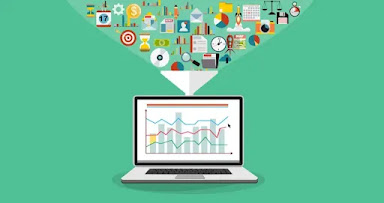Primary Data vs. Secondary Data: Choosing the Right Path for Your Research
In the realm of research and data analysis, the choices you make regarding data collection can significantly impact your project's success. This blog will explore the distinctions between primary data and secondary data, shedding light on their unique characteristics, advantages, disadvantages, and real-world applications. Join us on this journey to grasp how these data types can shape the trajectory of your research endeavors.
Primary
Data:
Primary data
serves as the bedrock of original research, representing information that you
collect firsthand for your analysis. Think of it as a blank canvas, awaiting
your creative touch. Primary data is tailored to your specific research
objectives, making it fresh, unique, and unpublished.
Key
Characteristics of Primary Data:
- Freshness and Uniqueness: Primary data offers up-to-date
insights unique to your research context, unspoiled by prior publication.
- Specificity: Researchers design data collection
methods to precisely align with your research project's objectives and
questions.
- Collection Methods: Data can be collected through
surveys, interviews, experiments, observations, and measurements.
- Quality and Control: Researchers maintain control over
the data collection process, ensuring high-quality, relevant data.
Benefits of
Primary Data:
- Relevance: Tailored to address specific
research questions.
- Control: Researchers dictate data
collection methods, ensuring data quality.
- Accuracy: Direct sourcing minimizes the risk
of errors.
Drawbacks of
Primary Data:
- Time and Cost: Collecting primary data can be
resource-intensive.
- Resource Requirements: It demands personnel, equipment,
and facilities.
- Bias Risk: Poorly designed studies can
introduce bias.
Example: Consider a company conducting surveys
to understand customer preferences or running experiments to test hypotheses.
These are quintessential examples of primary data collection.
Secondary
Data:
In contrast,
secondary data is information that already exists, collected by others for
different purposes. It's a valuable resource for researchers looking to tap
into existing knowledge.
Key
Characteristics of Secondary Data:
- Readily Available: It is easily accessible from
various sources like government databases, publications, and reports.
- Varied Types: Secondary data includes both
quantitative (e.g., statistics, surveys) and qualitative (e.g., text
documents, historical records) data.
- Broad Applicability: While it may not align perfectly,
secondary data is useful for various research objectives.
Advantages
of Secondary Data:
- Time and Cost Savings: Pre-existing data can save you
time and resources compared to primary data collection.
- Longitudinal Analysis: It grants access to historical
data for trend analysis and comparisons.
- Large Datasets: Secondary data often provides
extensive datasets that can enhance your research.
Drawbacks of
Secondary Data:
- Lack of Control: You can't influence the data
collection process, potentially leading to quality issues.
- Limited Specificity: Data may not precisely match your
research objectives.
- Outdated or Incomplete Data: The collected data might be
outdated or incomplete.
Example: Think of census data, publicly
available economic indicators, research papers, historical records, or industry
reports. These sources represent the rich world of secondary data.
Making the
Choice: Primary, Secondary, or Both?
In the world of
research and data analysis, there's no one-size-fits-all answer. The choice
between primary and secondary data depends on factors like research goals,
available resources, time constraints, and the level of control you need.
Oftentimes,
researchers opt for a blend of both primary and secondary data to paint a
comprehensive picture of their subject. This allows for in-depth exploration
while benefiting from the time and cost efficiencies that secondary data
offers.
Whether you're
collecting primary data to craft your research narrative or delving into the
treasure trove of secondary data, understanding these two types and their
respective strengths is key to unlocking the power of data in your research and
analysis endeavors. Your data journey begins with a choice - choose wisely.



Comments
Post a Comment